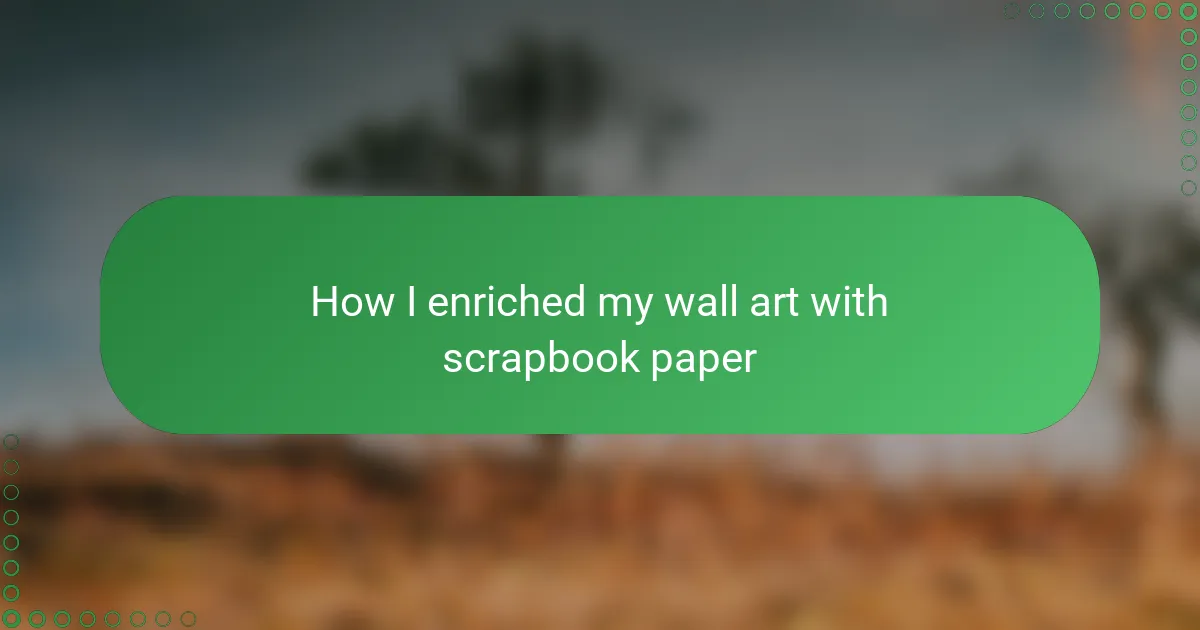Key takeaways
- Handmade paper crafts offer a unique emotional depth and personal connection that machine-made paper lacks.
- Scrapbook paper provides vibrant patterns and textures, enhancing creativity and personal expression in various projects.
- Careful selection of materials and tools, such as quality scissors and adhesives, is essential for successful paper crafting.
- Embracing imperfections and experimenting with scale and contrast adds character and intrigue to paper art creations.
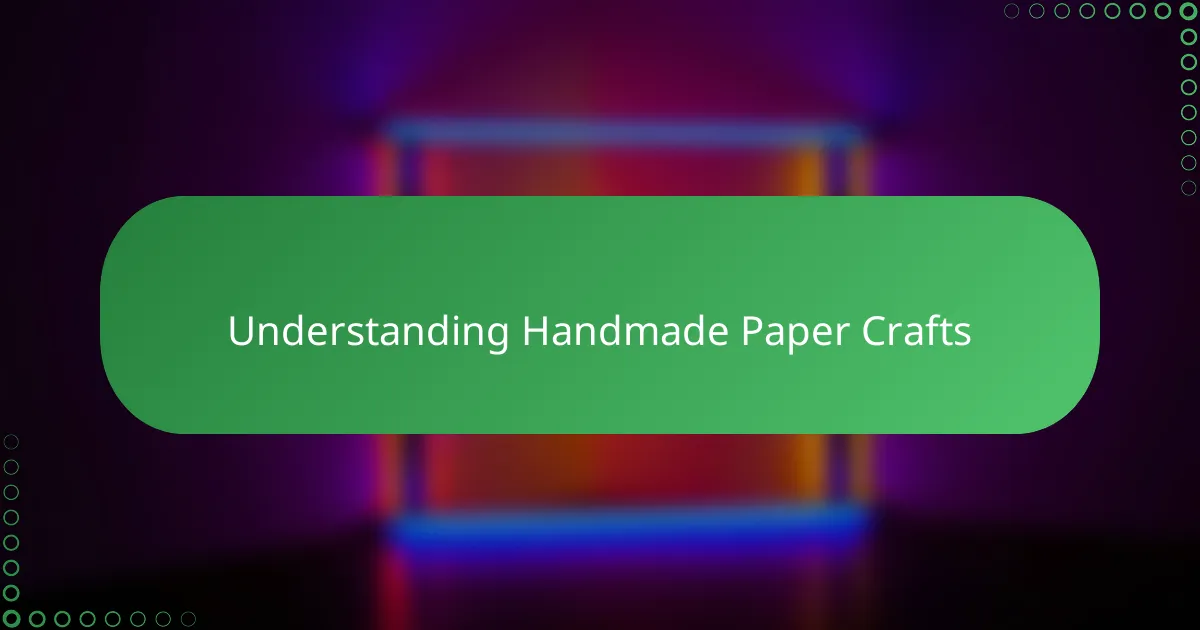
Understanding Handmade Paper Crafts
Handmade paper crafts have always fascinated me because they combine creativity with a tangible connection to the materials. When I first explored this world, I was amazed at how simple pieces of paper could transform into intricate art through folding, layering, or embellishing. Have you ever paused to think about the unique textures and imperfections that make each sheet of handmade paper so special?
In my experience, understanding the essence of handmade paper crafts means appreciating the time and care involved in crafting each element. It’s not just about the final design; it’s about the story behind every fiber and color. This process adds a personal, emotional depth to the work that machine-made paper simply can’t replicate.
The beauty of handmade paper crafts, as I see it, lies in their versatility and charm. Whether you’re making cards, journals, or wall art, the tactile quality of handmade paper invites you to slow down and savor every moment of creation. Doesn’t that make the craft feel more meaningful, almost like a conversation between you and the paper itself?
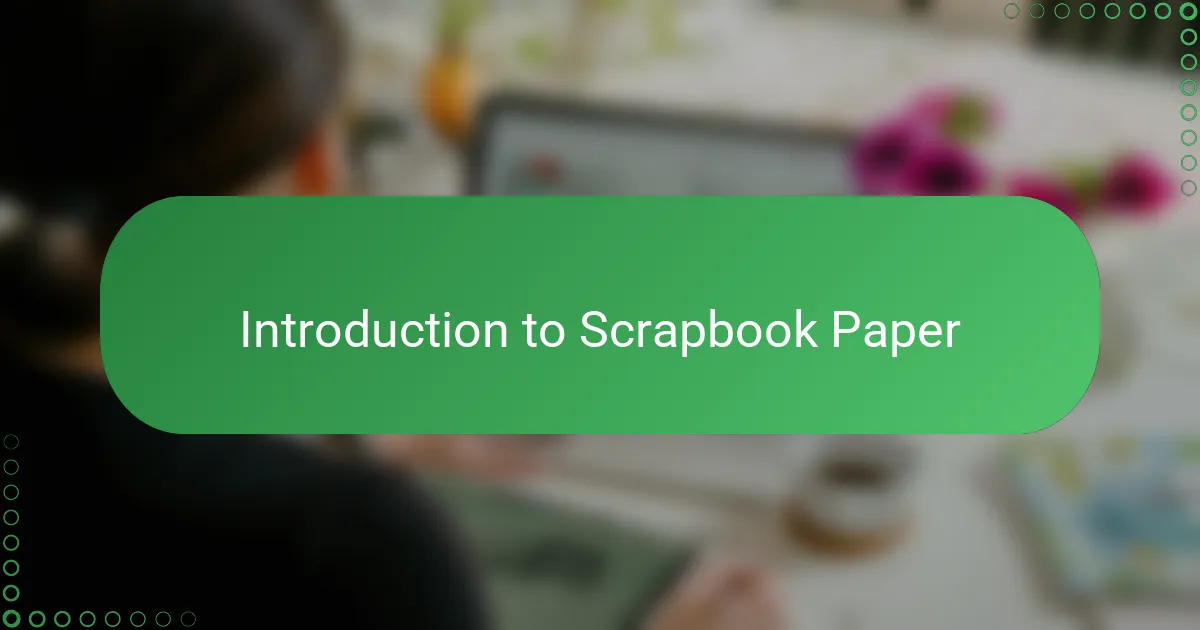
Introduction to Scrapbook Paper
Scrapbook paper always caught my eye because of its vibrant patterns and textures. Unlike plain paper, it feels like each sheet carries a little story or mood waiting to be discovered. Have you noticed how some sheets instantly spark your creativity just by looking at them?
When I first started working with scrapbook paper, I was surprised at how many designs were available—from delicate florals to bold geometric prints. It felt like having a palette of endless possibilities within arm’s reach. The variety made me realize scrapbooking isn’t just for albums; it’s a fantastic resource to enrich any paper craft project.
What I truly appreciate about scrapbook paper is how it adds personality without much effort. Its pre-printed designs save time but still allow you to personalize your creation. Using it felt like giving my wall art an instant uplift with colors and patterns that resonate on a deeper, more emotional level.
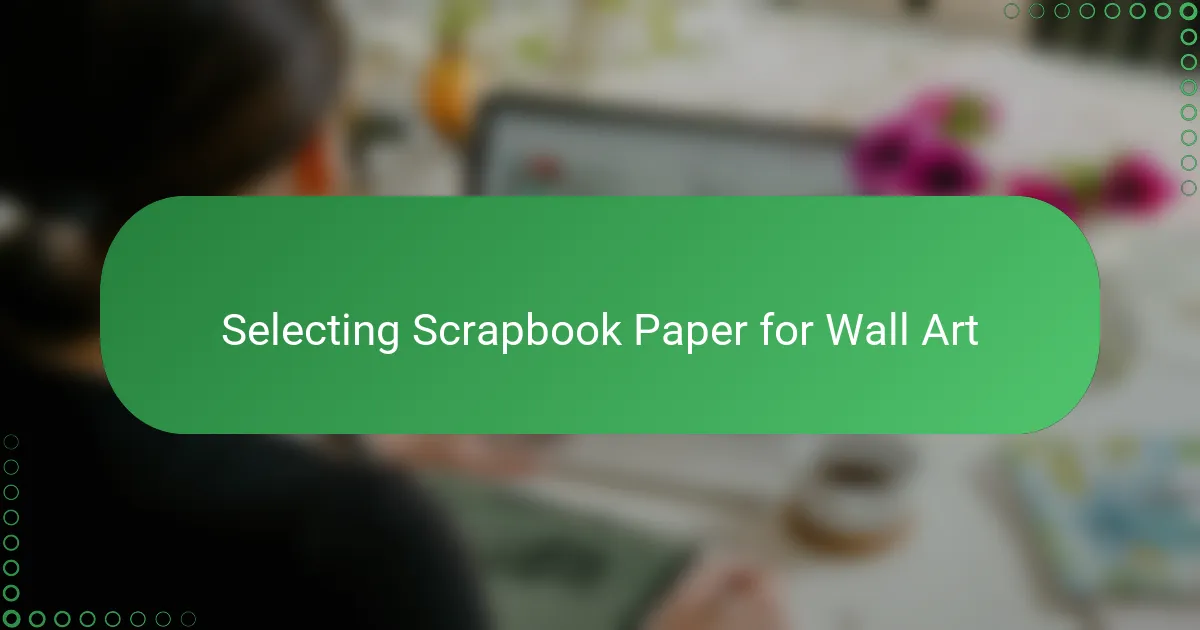
Selecting Scrapbook Paper for Wall Art
Choosing scrapbook paper for wall art felt like picking the perfect outfit for a special occasion. I found myself drawn to sheets with textures that invited touch—sometimes smooth and glossy, other times with a subtle linen feel. Have you ever noticed how the texture of paper can change the entire mood of a piece? For me, that tactile difference made the wall art feel alive.
Color and pattern selection was another exciting part of the process. I kept asking myself, “Do I want something bold and graphic to make a statement, or should I go with delicate florals for a softer vibe?” Each choice seemed to tell a different story on my wall, and that made the selection feel deeply personal. I realized that scrapbook paper wasn’t just a background element—it became the heart of the artwork.
Weight and durability also played a bigger role than I initially expected. Some papers were thin and delicate, perfect for layering but tricky to handle, while others were sturdier and provided a solid base. I learned the hard way that choosing the right thickness was key to creating wall art that lasts and stays beautiful over time. Have you ever been frustrated by paper that tears or warps too easily? That experience taught me to balance aesthetics with practicality.
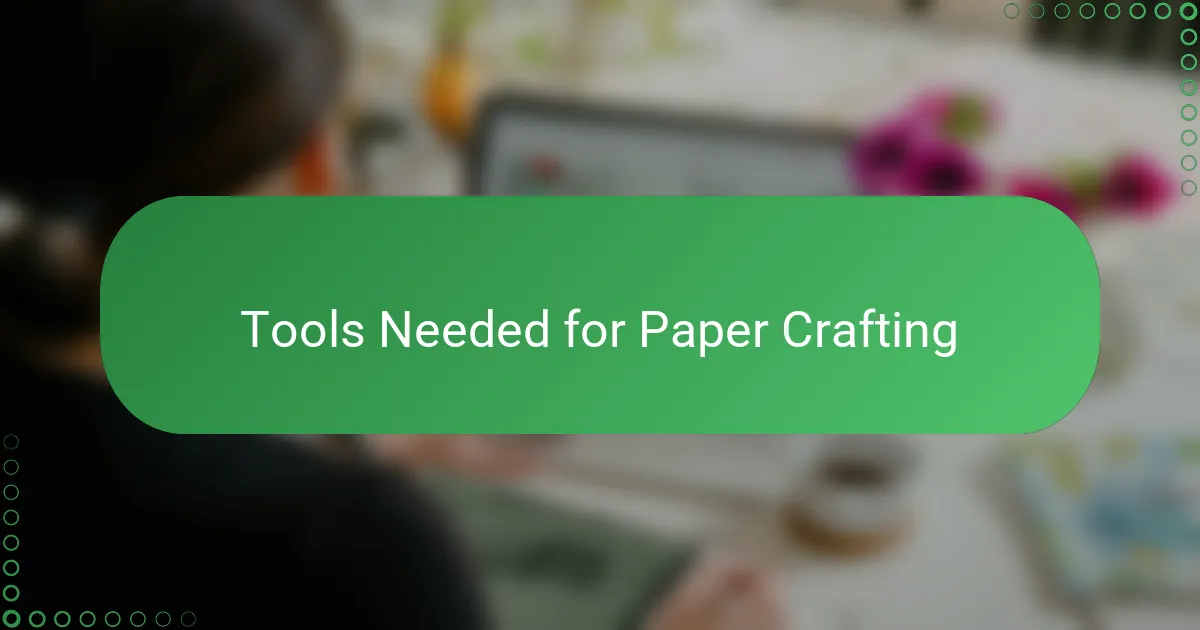
Tools Needed for Paper Crafting
Gathering the right tools always felt like assembling my creative toolkit, each item essential yet simple. Scissors with sharp, precise blades became my trusted companions for cutting intricate shapes from scrapbook paper without tearing. Have you ever tried using dull scissors? It’s frustrating and can ruin the delicate designs you’ve selected.
I found that a good-quality craft knife paired with a self-healing cutting mat made all the difference when working on detailed cuts or layering paper. The smooth glide of the blade felt like an extension of my hand, allowing me to sculpt my vision with confidence. Why struggle when the right tool makes the process so much more enjoyable and accurate?
Adhesives were another surprise for me. Choosing between glue sticks, double-sided tape, or liquid glue wasn’t just about sticking paper together—it was about how clean and neat the final piece would look. Sticky residue or warped paper can quickly spoil a project’s charm, so I learned to test each adhesive on scrap pieces before committing to my art. Isn’t it amazing how such small decisions affect the entire crafting experience?

Techniques to Enrich Wall Art with Paper
One technique I found transformative was layering different scrapbook papers to create depth and intrigue. By overlapping patterns and textures, the wall art gained a tactile richness that invites closer inspection. Have you ever noticed how a simple layering trick can turn flat designs into dynamic, almost three-dimensional compositions?
Cutting shapes and motifs from scrapbook paper to add customized accents became another favorite method. It felt rewarding to personalize generic patterns into something uniquely mine. Sometimes, I’d use punch tools or scissors to create borders and focal points that enhanced the overall narrative of the piece—turning each wall art into a mini storybook.
Applying subtle effects like distressing the edges or adding light washes of paint on scrapbook paper also enriched my projects. This technique introduced an element of surprise and imperfection that handmade paper lovers like me truly appreciate. Isn’t it fascinating how a little texture manipulation can breathe life and emotion into paper art?

Step-by-Step Wall Art Creation
Starting my wall art creation, I always begin by selecting a sturdy backing board—it’s the canvas that supports everything else. From there, I carefully plan the arrangement of scrapbook paper pieces, almost like piecing together a puzzle. Have you ever felt that satisfying moment when all the colors and patterns start making sense together on your desk?
Next comes the cutting and layering, which is where the magic truly happens. I use sharp scissors and a craft knife to trim each paper shape precisely, taking care to preserve delicate edges. The layering process reminds me of building a story, with each sheet adding its own chapter and texture, making the art feel alive and inviting.
Finally, I secure everything with a clean adhesive, making sure not to wrinkle or warp the paper—a small challenge, but one I’ve learned to handle with patience. When I step back and see the completed piece hanging on my wall, I realize how these simple steps transformed basic materials into something meaningful. Isn’t it amazing how paper can tell such beautiful stories when given the right care?
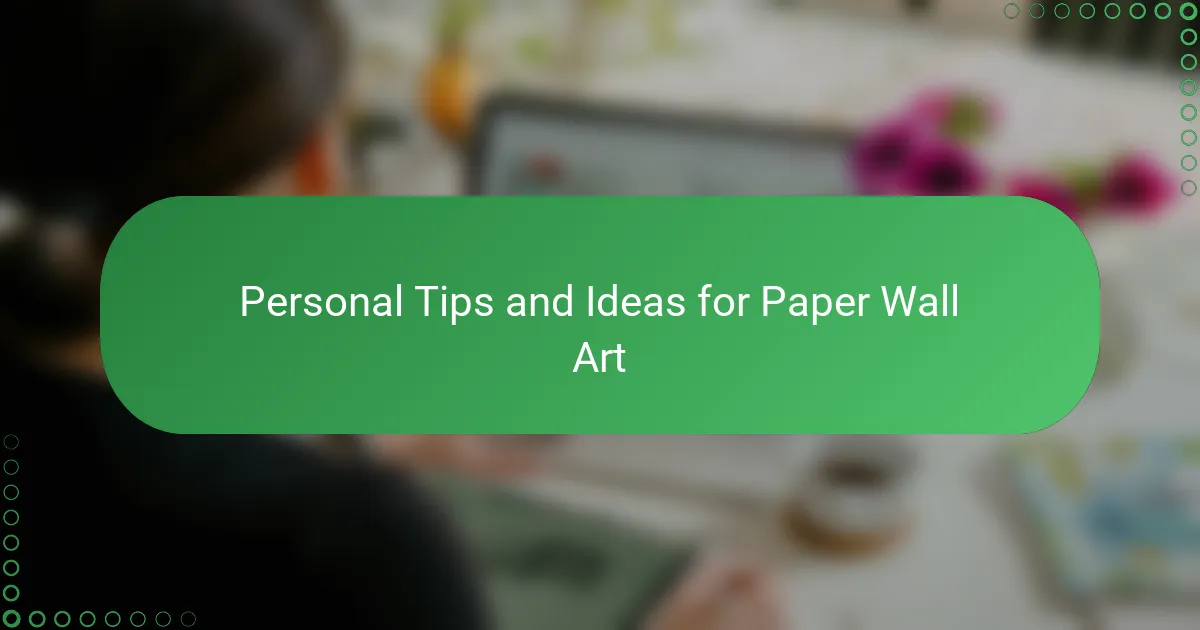
Personal Tips and Ideas for Paper Wall Art
When I started experimenting with paper wall art, I quickly learned that patience is key. Rushing through layering or adhesive application often resulted in wrinkles or tears, which was frustrating. Have you ever felt that mix of excitement and anxiety as you carefully place each piece of paper, hoping it sticks just right? That moment taught me to slow down and enjoy the process rather than just focus on the end result.
Another tip I hold dear is to embrace imperfections. Early on, I would get upset if an edge wasn’t perfectly straight or colors didn’t match exactly. Over time, I realized those little irregularities add character and authenticity to my art. Doesn’t it feel more genuine when you can see the hand of the creator in every detail?
Finally, I always encourage experimenting with scale and contrast. Mixing large bold prints with tiny delicate patterns adds balance and intrigue. I remember once using oversized floral scrapbook paper alongside tiny geometric cutouts, and the interplay brought the whole piece to life in a way I hadn’t anticipated. Have you tried combining unexpected patterns to surprise yourself and your audience? It’s a rewarding way to keep paper art fresh and personal.
